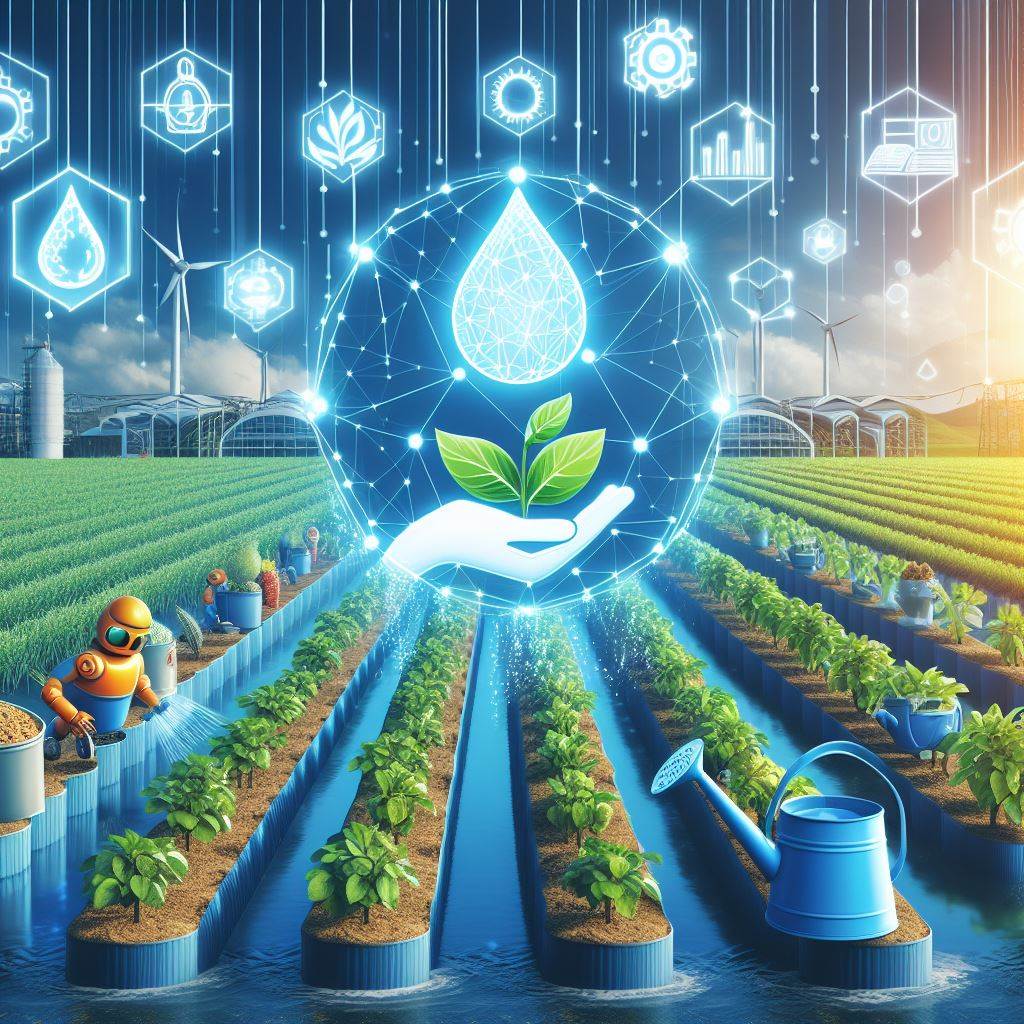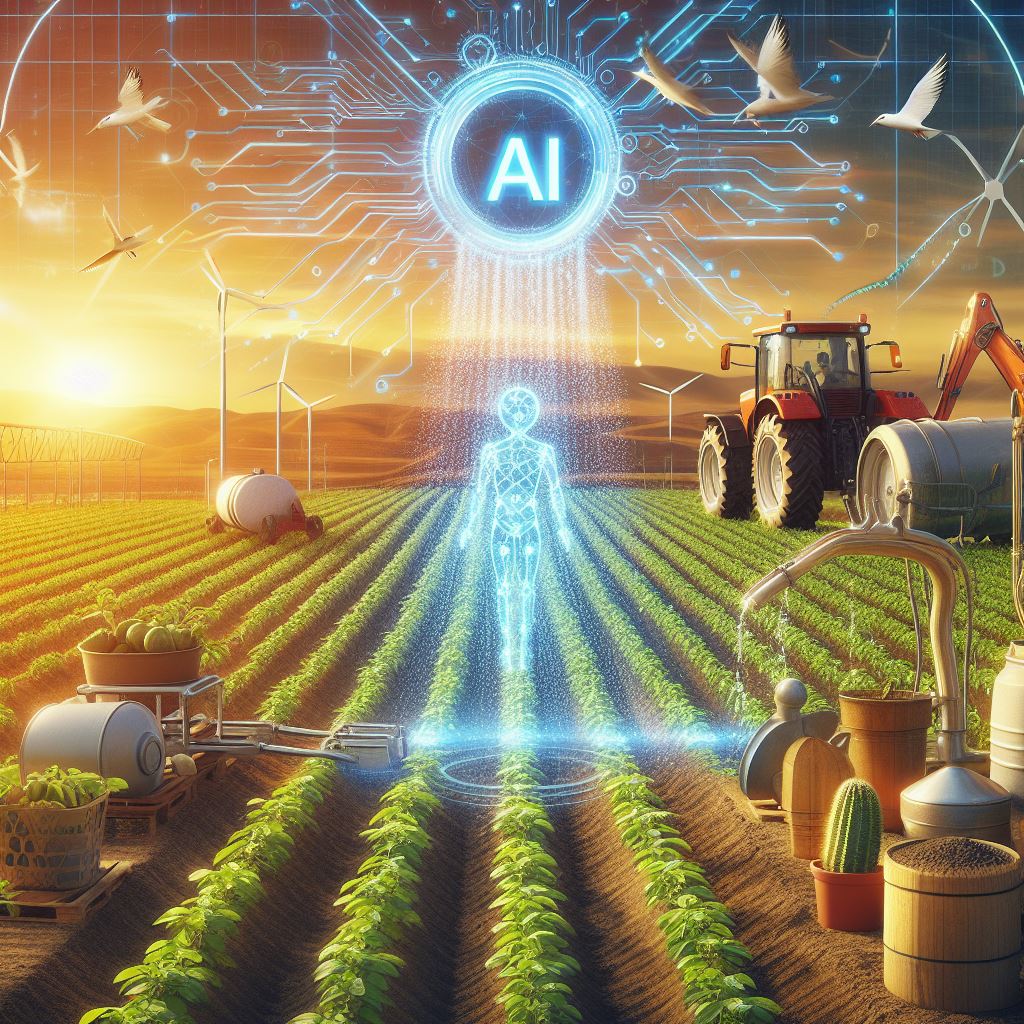Introduction
AI for Agriculture ,climate change, water scarcity, and rising food demand are putting a lot of pressure on our precious crops. How can we produce more food with less water and resources? They can we ensure that our crops are healthy and resilient to disease and pests? How can we make farming more profitable and sustainable?
AI is not just a fancy term for robots or sci-fi movies. It’s a powerful tool that can analyze data, learn from it, and provide us with useful insights and solutions. And one of the most exciting applications of AI is in agriculture, where it can help us increase crop yield and save water.
In this blog post, I’m going to show you how AI and computer vision technologies can help us improve our farming practices by providing real-time data and insights on crop growth, soil moisture, and weather conditions. I’ll also give you some examples of how farmers around the world are using AI and computer vision to monitor their crops, schedule their irrigation, and predict their yield.
Crop Monitoring with AI and Computer Vision
One of the most important aspects of farming is crop monitoring. We need to keep an eye on our crops and make sure they are growing well and free from any issues. But crop monitoring can be time-consuming, labor-intensive, and costly. We can’t always be in the field, and we can’t always see everything that’s happening with our crops. That’s where AI and computer vision come in handy.
AI and computer vision are technologies that can process and understand images of crops from drones, satellites, or cameras. They can use these images to detect and identify any problems with our crops, such as disease, pest infestation, nutrient deficiency, or drought stress. They can also measure and track the growth and health of our crops, such as leaf area, biomass, chlorophyll, and yield. And they can do all this faster, cheaper, and more accurately than we can.
For example, a company called Plantix has developed an app that can diagnose crop diseases using a smartphone camera. Farmers can simply take a picture of their crop and get an instant diagnosis and treatment recommendation. Another company called CropIn has created a platform that can monitor crop growth and performance using satellite imagery and AI. Farmers can access real-time data and insights on their crops, such as crop stage, crop health, and crop risk.
The benefits of crop monitoring with AI and computer vision are huge. We can reduce the use of pesticides and chemicals, which can harm the environment and our health. We can increase the quality and quantity of our crops, which can boost our income and food security. And we can optimize our crop management, which can save us time and money.
Irrigation Scheduling with AI and Computer Vision
Another crucial aspect of farming is irrigation scheduling. We need to provide our crops with the right amount of water at the right time. But irrigation scheduling can be tricky, as it depends on many factors, such as soil moisture, weather, crop water requirements, and crop growth stages. If we over-irrigate, we waste water and money, and we risk leaching nutrients and causing waterlogging. If we under-irrigate, we stress our crops and reduce their yield and quality.
That’s why we need AI and computer vision to help us schedule our irrigation. AI and computer vision can use data from sensors, weather forecasts, crop models, or crop images to decide how much water to provide to our crops, and when. They can also adjust the irrigation schedule in real-time, based on the changing conditions and needs of our crops. And they can do all this without any human intervention, using smart irrigation systems that can control the water valves and pumps automatically.
For instance, a company called Taranis has developed a system that can optimize irrigation using drone imagery and AI. The system can measure the crop water stress index, which indicates how much water the crop needs, and provide irrigation recommendations to the farmer. Another company called CropX has developed a system that can optimize irrigation using soil sensors and AI. The system can measure the soil moisture, temperature, and electrical conductivity, and provide irrigation recommendations to the farmer.
The benefits of irrigation scheduling with AI and computer vision are enormous. We can reduce water usage and increase water efficiency, which can conserve water resources and lower our water bills. We can also improve crop yield and quality, which can enhance our food production and food safety. And we can promote sustainable farming practices, which can protect the environment and our future.
Yield Prediction with AI and Computer Vision
The final aspect of farming that I want to talk about is yield prediction. We all want to know how much crop we can expect to harvest at the end of the season. But yield prediction can be challenging, as it depends on many factors, such as crop health, growth, weather, soil, and market demand. If we overestimate our yield, we may end up with excess inventory and lower prices. If we underestimate our yield, we may miss out on opportunities and lose customers.
That’s why we need AI and computer vision to help us predict our yield. AI and computer vision can use data from historical records, current observations, and future projections to estimate our crop yield. They can use factors such as crop type, variety, location, planting date, fertilization, irrigation, disease, pest, weather, soil, and market demand to calculate our yield potential. And they can do all this with high accuracy and reliability, using advanced machine learning and statistical models.
For example, a company called Farmers Edge has developed a system that can predict crop yield using satellite imagery and AI. The system can analyze the crop vigor, biomass, and yield potential, and provide yield maps and forecasts to the farmer. Another company called Agrosmart has developed a system that can predict crop yield using IoT sensors and AI. The system can monitor the crop conditions, such as temperature, humidity, rainfall, and solar radiation, and provide yield estimates and alerts to the farmer.
The benefits of yield prediction with AI and computer vision are immense. We can increase crop profitability and reduce crop losses, which can improve our income and livelihood. We can also improve food security and food distribution, which can feed more people and reduce hunger. And we can plan ahead and make better decisions, which can optimize our farming operations and strategies.
How can I get started with AI and computer vision in agriculture?
AI and computer vision are powerful technologies that can help you improve your farming practices and outcomes. To get started, you need some basic equipment and software, such as:
- A camera, drone, or satellite to capture images of your crops, animals, or land.
- A computer, smartphone, or cloud service to process and analyze the images using AI and computer vision algorithms.
- An app, platform, or tool that can provide you with useful data and insights, such as crop health, irrigation, yield, etc.
There are many resources and tutorials available online that can help you learn more about AI and computer vision in agriculture and how to use them.

For example, you can check out these web search results that I found for you:
- Computer Vision and Deep Learning for Agriculture: This blog post covers the benefits, applications, challenges, and tradeoffs of using deep learning for agriculture.
- Top Applications of Computer Vision in Agriculture (2024 Guide): This article provides an overview of computer vision for agriculture and smart farming applications, such as livestock, poultry, or aquaculture monitoring, crop monitoring and yield estimation, and security and compliance monitoring.
- AI In Agriculture: Using Computer Vision To Improve Crop Yields: This article shows a python code snippet that demonstrates how computer vision and machine learning can be used to monitor crop growth.
- How Computer Vision in Agriculture Is Boosting Productivity: This article explains how computer vision can help you save production costs with intelligent automation and boost productivity.
Conclusion
AI and computer vision are amazing technologies that can help us increase crop yield and save water in agriculture. They can help us monitor our crops, schedule our irrigation, and predict our yield, using real-time data and insights. They can also help us reduce our environmental footprint, enhance our farmer livelihoods, and increase our food production and food safety.
AI and computer vision are not just a dream or a hype. They are a reality and a necessity. Farmers around the world are already using them to improve their farming practices and outcomes. And you can too. All you need is a smartphone, a drone, a sensor, or a camera, and an AI app or platform that can do the magic for you.


Your article helped me a lot, is there any more related content? Thanks!